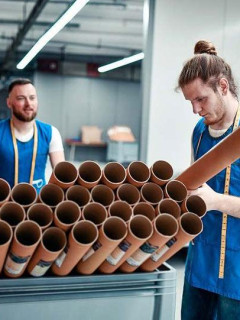How often do you clean your warehouse? A spotless workspace is more important than it seems. You’ll find all the details in this article. We’ve put together the top 5 benefits of a clean warehouse and introduced you to the Japanese 5S method. This way, cleaning will become just another simple routine for you.
1. Safety first!
The first subject, and one of the most important in this top 5, is safety in the warehouse. In addition to good personal protection and ergonomics, a clean warehouse reduces the risk of accidents in the workplace. Slips, trips, falls… the list is certainly long (and dangerous). By cleaning your warehouse regularly, you can avoid liquids on the floor and rubbish lying around.
The general health and personal protection of your workers are, of course, equally important. Limit their exposure to dust or dirt to prevent occupational illnesses and respiratory problems. This leads to a healthier workforce and reduced absenteeism.
The accumulation of waste and flammable materials, such as paper and cardboard, increases the risk of fire. That’s why your warehouse must always be clean and tidy to minimise the risk of fire. Precisely for the safety of the employees and the goods in the warehouse. What’s more, greater safety doesn’t just mean fewer accidents, injuries or occupational illnesses in the workplace. You also avoid potential compensation and rehabilitation costs. Prevention is better than cure!

2. Improve your logistics flow
An organised, clean warehouse is the equivalent of a warehouse where workers are concentrated. And of course, “focused” also means “productive”. Without the obstacles of clutter and waste, warehouse workers move through the warehouse more quickly. They have easier access to materials and tools, enabling them to carry out their tasks more efficiently. This has a positive impact on logistics productivity. With a clean warehouse, companies can process customer orders more quickly and meet their delivery deadlines more effectively.
What’s more, a clean and organised environment boosts employee morale. Employees feel valued and motivated in a clean workplace, which translates into improved performance and a positive corporate culture. It also helps to attract and retain talent.
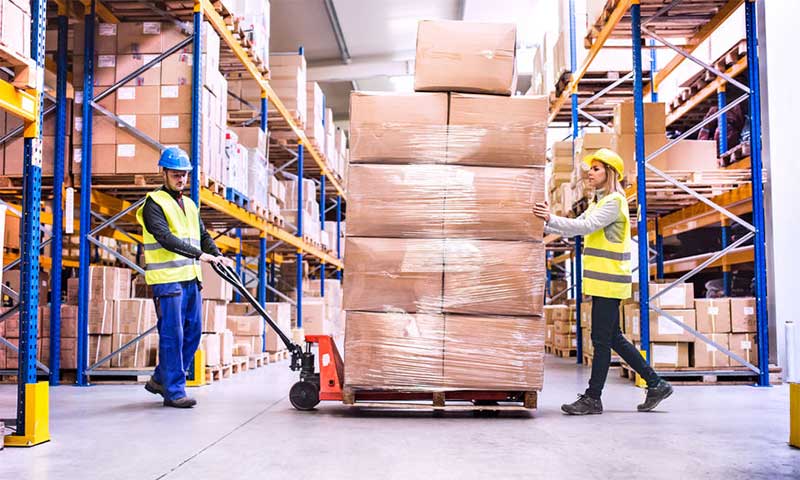
3. Protect your goods and warehouse equipment
Dust, dirt and other debris can cause serious damage to goods and warehouse equipment. This leads to costly problems such as repairs or replacements. What’s more, an unusable machine compromises your daily logistics flow. This too can lead to additional (unforeseen) costs.
Regular cleaning not only extends the life of packaging machines, but also keeps them in perfect condition for longer. Just like packaging machines, stored goods also benefit from a clean warehouse. The storage of hazardous substances, pharmaceuticals or foodstuffs, for example, requires special attention.
► Eliminate (seiri: 整理)
The space available in a warehouse is limited and very precious. That’s why you need to take a critical look at the following topics right from the first stage:
- What materials do I really need?
- What are the priority installations?
- What objects do I use on a daily basis?
- What quantities do I really need?
Based on these questions, you can eliminate unnecessary items that are taking up available space. The benefits? Less clutter, fewer distractions, less wasted time, more space and greater accessibility. By eliminating superfluous items, you can concentrate on those that have value.
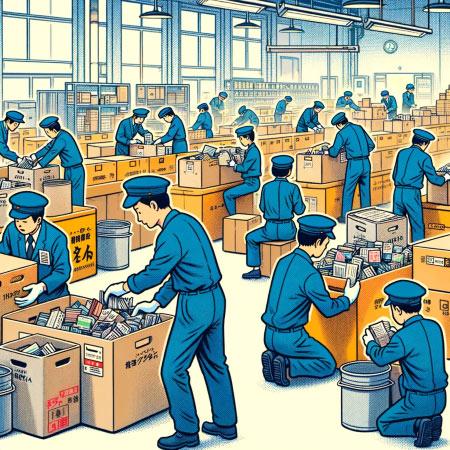
► Ranger (seiton: 整頓)
Once you’ve sorted and eliminated unnecessary items, stage 2 begins. During this phase, organise the remaining objects in the most efficient way possible. Find a logical and easily accessible place for each item so that you don’t waste time looking for it. Work materials, tools or important documents are strategically placed to ensure optimum workflow.
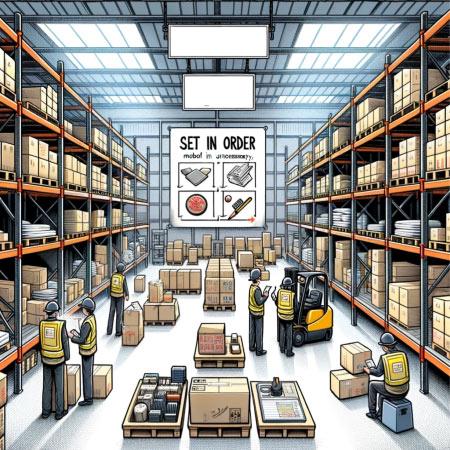
► Clean (seisō: 清掃)
In step 3, Japan emphasises the importance of a clean warehouse. A simple dusting is only the beginning of a thorough cleaning. The aim is to thoroughly clean the entire workspace: machines, equipment, floors and other work surfaces. Regular cleaning not only ensures a more pleasant working environment, but also enables any leaks, wear or defects to be identified quickly.
Cleaning a warehouse is a daily task for them, and part of an overall plant cleaning plan. This is precisely why warehouse workers are essential to this system. How do you implement it? The following steps make it clear.
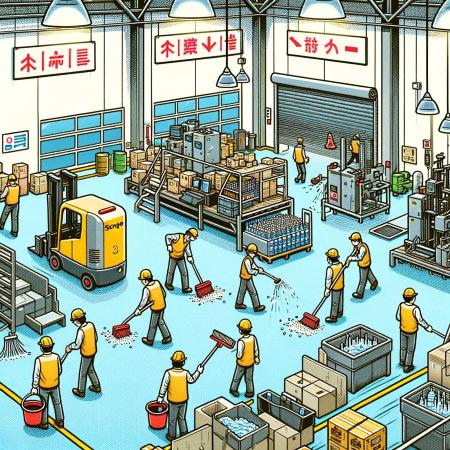
► Standardise (seiketsu: 清潔)
The organisation of a warehouse is strongly linked to its layout. Warning signs and markings promote the distribution of goods and the use of machinery. By making the different areas of the warehouse easily identifiable, you ensure that workstations, aisles, internal circulation and storage areas are clearly demarcated.
In addition, good practice and clear guidelines are essential for implementing the first 3 stages of the 5S method. This standardisation helps employees to follow correct hygiene procedures.
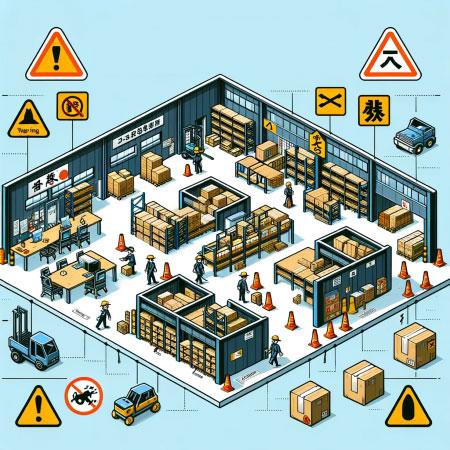
► Respect (shitsuke: 躾)
The final step focuses on discipline, an important element of Japanese work culture. It’s about cultivating a mindset in which everyone feels responsible for maintaining or improving standards. Thanks to training and motivation, the 5S method is becoming an integral part of the daily routine in the Japanese warehouse – and perhaps in yours too?
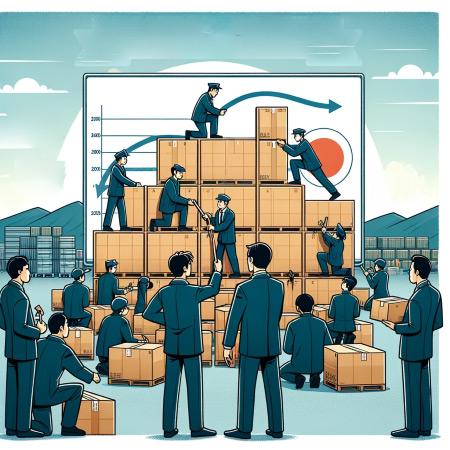
4. Benefit from precise stock management
If warehouse stock is a company’s most important asset, accurate stock management is a good place to start. To do this, let’s zoom in on physical stock. This involves determining the actual number of goods stored in your warehouse. This manual counting process requires the cooperation of many employees, depending on the size of the warehouse.
Counting physical stock enables you to estimate and avoid stock-outs and surpluses in good time. Good organisation is therefore the best course of action, and it starts with a clean and tidy warehouse. A clean warehouse gives a realistic picture of stock levels, which makes stock management and planning much easier.

5. A clean image thanks to a clean warehouse
The state of the warehouse is a direct reflection of the company’s professional image. For example, a well-maintained warehouse sends out a positive signal to customers, suppliers and visitors. Hygiene and safety inspire confidence.
A systematically maintained warehouse also suggests that the company takes good care of its goods. Customers and partners can be sure that their products are handled and stored with the utmost care. It shows that your company values quality and professionalism. After all, who doesn’t appreciate a clean warehouse?

* Some of the images in this article were generated by AI.













